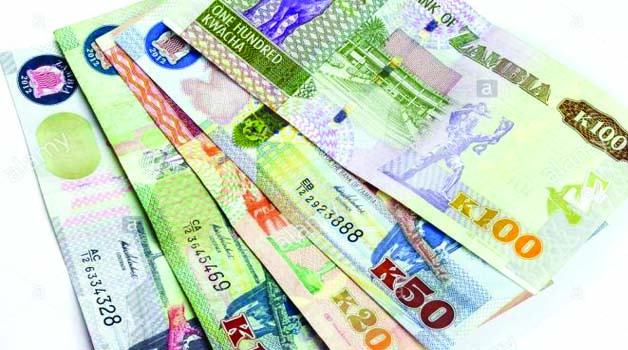By Allan Chanda Chitwamali and Sylvia Chuma Kagulurah-
Zambia’s economic performance and the unsustainability of its public debt has continued to be a concern to the citizenry and many stakeholders across the country.
The debt service payments have ballooned and continue to negatively impact the citizens, who are distressed by the high cost of living.
The cost of living is influenced by various factors among which are the Foreign Exchange Rate and Inflation Rate which are key economic indicators that help gauge the performance of the economy. Notably, as a result of the improved economic performance, the aforementioned indicators have recorded significant improvements in the first and second quarters of 2022.
The Zambian Kwacha (ZMW) has consistently been appreciating and has remained relatively stable with the rate standing of ZMW 16.38/US$ as of 7th July, 2022 from ZMW 18.10/US$ in February 2022.
The performance of the Kwacha in the last three months has been enhanced by supply support from the Bank of Zambia (BOZ) as well as the news that Zambia is making progress in the efforts to restructure its external debt portfolio.
The BOZ’s capacity to intervene in the foreign exchange market has recently been strengthened by the encouraging levels of dollar ($) tax receipts from the mining sector and the massive investments in the agriculture sector, supported by the European Union (EU) which intends to promote value addition.
Additionally, the Annual Inflation Rate which now stands at 9.7% as of June 2022, has been on a steady and consistent downward trend over the last 10 months. Despite this still being above the targeted 6-8%, the 9.7% annual inflation for the month of June suggests a significant reduction.
This is the lowest it has been in nearly 3 years. These gains have been possible despite the effects of the Russia-Ukrainian war which started in December 2021 at the time that led to a global increase in crude oil prices.
Additionally, these gains have been in the face of the partial removal of fuel subsidies which have seen the following percentage increase in pump prices of Petrol 7.21%, Diesel 9.24% and Kerosene 13.38 since the last monthly review in June 2022.
Though positive indications of the inflation rate have been generally expected to result in immediate improvements in the cost of living among many Zambians, this has not been the case as the slowdown in inflation has only reduced the pace at which prices are rising over a comparable period.
The slowdown in annual inflation has been mainly attributed to price movements in both food and non-food items. The impact of the slowdown in inflation will only be of benefit in the long run if there is a stable and consistent drop in inflation which is complimented by a commensurate increase in income to offset the impacts of inflation.
Furthermore, the prices of commodities are market driven and cost reflective, and what is reported as “inflation” is the “Consumer Price Index.”
This means that of the reported overall 9.7 percent annual inflation, the food and non-alcoholic beverages group contributed 6.7 percentage points, while Non-food items accounted for 3.0 percentage points.
Of the 3.0 percentage points, clothing and footwear contributed the highest at 0.8 percentage points, followed by housing, water, electricity, gas and other fuels at 0.6 percentage points; furnishing household equipment and routine household maintenance groups contributed 0.5 percentage points.
The rest of the Non-Food group accounted for the remaining 1.1 percentage points. This highlights the fact that different food and non-food items are weighted differently and is the summation of the movements that form the figure reported.
Additionally, the erosion of the purchasing power of consumers, further affects businesses and business owners. This too has contributed to price increases over a given period, resulting in fewer people being able to afford certain goods and services or spending a larger portion of their incomes which have remained low to make these purchases.
The effects are broad, far-reaching and are felt from many sides. In consideration of the foregoing, it is evident that inflation is one of the major drivers of the cost of living, but it’s not the only factor influencing the cost of living.
CUTS therefore calls on the New Dawn Government to urgently provide a clear road map outlining the wide range of policy proposals and home-grown solutions, such as Domestic Resource Mobilisation (DRM), that will be used to compliment the gains in foreign exchange as well as the reduction in inflation.
These will be effective in cushioning the debt impact and will stimulate economic recovery. We urge the Government to see to it that the 2022 National Budget is fully implemented with utmost commitment. Furthermore, the government should ensure that the national and economic development attainment remains the main priority, as stated in the Eighth National Development Plan (8NDP), under the theme “Socio-economic transformation for improved livelihoods”. This will be important in guaranteeing growth that transforms the livelihood of the people and overall economic recovery.







